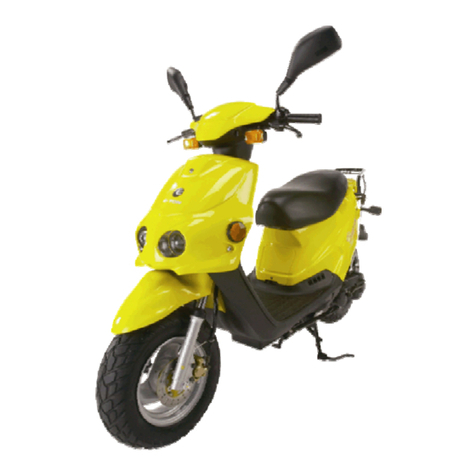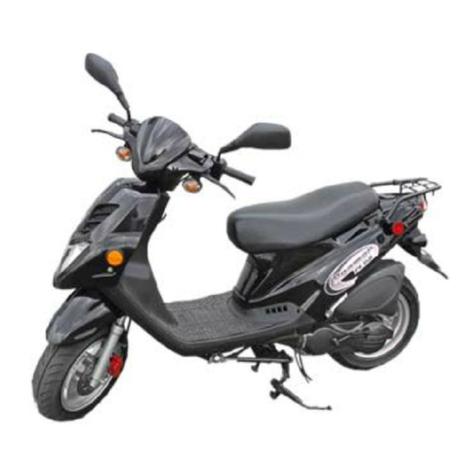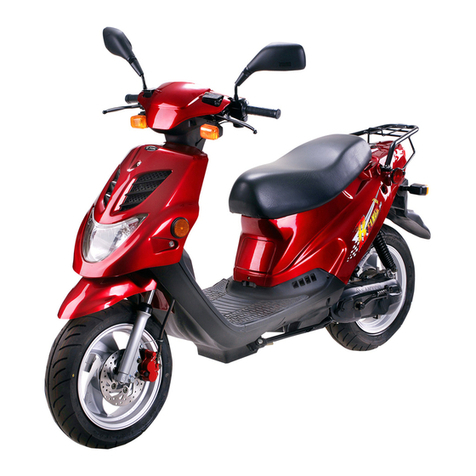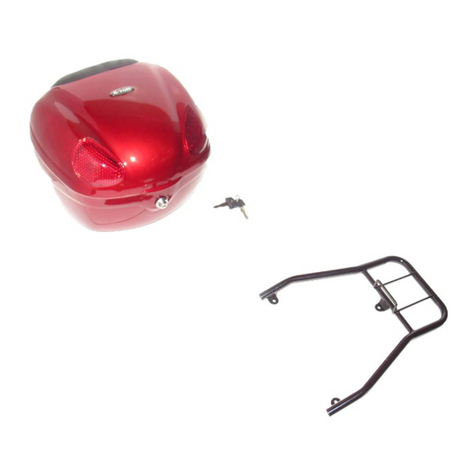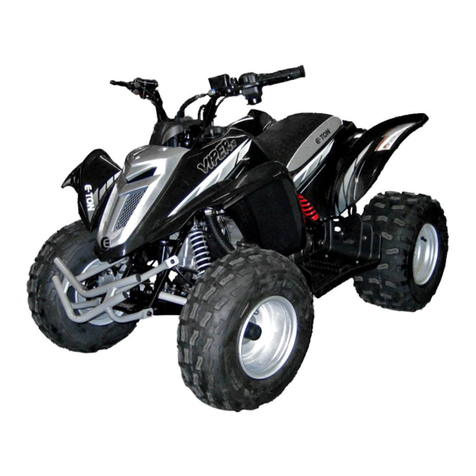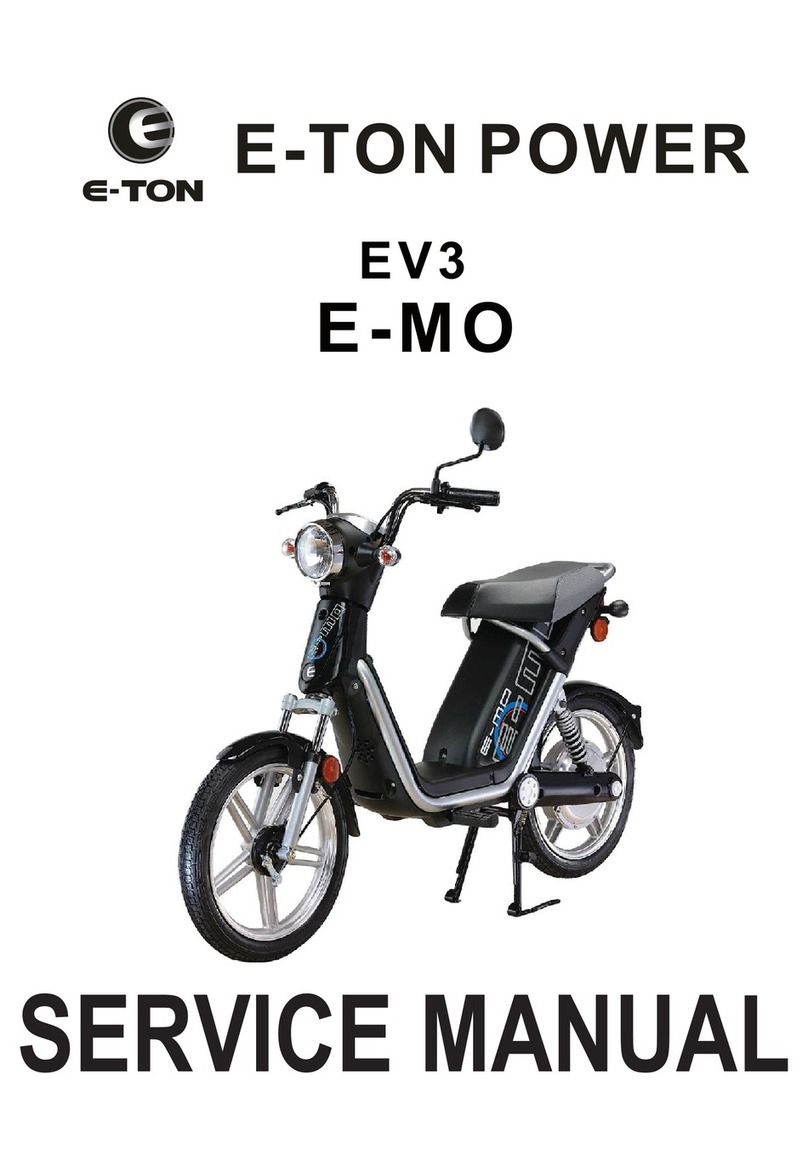The instrument cluster provides you with
operating conditions of your vehicle. To the
left is the fuel gauge which indicates the fuel
level in the fuel tank. When the needle
reaches the red zone on the gauge, you are
running Iow on fuel and the tank should be
refilled. This gauge is controlled by a fuel
level sending unit located inside the fuel tank.
The center speedometer indicates the
current speed of your vehicle. The
speedometer is calibrated in both MPH,
(Miles per hour) and KPH, (Kilometers per
hour). This gauge is controlled by a cable
attached to the front wheel of the vehicle.
The right side is a series of three indicator
lamps. The top most lamps in the cluster will
indicate that the turn signals have been
activated and also indicates which signal
lamps are illuminated.
The right indicator lamp indicates the head
light controller is in the Hi-Beam, 100%,
position when illuminated.
The left lamp indicates the 2 cycle oil level in
the oil tank. When illuminated your oil tank is
Iow and needs to be refilled. Continued
operation of the engine with a Iow oil
condition will cause sever damage to the
engine and potentially unsafe operating
condition. Refill your oil tank with High grade
JASO FC 2 cycle injector oil.
Instrument Cluster
Throttle Control
The throttle control is the right-hand handle grip.
Throttle is controlled by twisting the grip.
The throttle control is spring loaded and set
at the factory to return to the idle position
when pressure is released.
Page 5
Ignition Switch
Ignition Switch
and stops the engine. The "OPEN" position can open
the seat when you want to use the storage compart-
ment under the seat. The "LOCK" Position locks the
In order to turn the key to the "LOCK" Position
The ignition switch is located on the control
column's right side below the handlebars. A key
is required to work the switch. This switch has
three positions,"ON", "OFF", "OPEN" and "LOCK".
The switch must be in the "ON" position for the
engine to start and run. The "OFF" position
disconnects power to the ignition and light circuits
steering column and allows the key to be removed.
position you must press down on the key with
the steering column turned slightly to the left.
NOTE: Always lock your vehicle when leaving it
unattended and take your keys for additional
security against theft of your vehicle.

